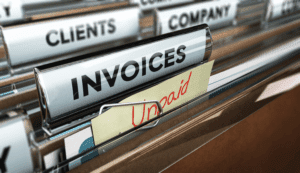
Simultaneously, while the treadmills have not yet been delivered, the buyer has now officially taken responsibility for the goods. The buyer should record an accounts payable balance and include the treadmills in their financial records. The fact that the treadmills may take two weeks to arrive is irrelevant to this shipping agreement; the buyer already possesses ownership while the goods are in transit. Before negotiating, make sure you understand the consequences of using FOB shipping point or FOB destination for your purchase—in terms of costs, risks, and responsibilities.
Which of these is most important for your financial advisor to have?
It means that a seller pays for all shipping costs and that a transaction is not complete until the goods reach the buyer’s destination undamaged. FOB freight prepaid and added specifies that the seller is obligated to pay the freight transportation charges but the seller bills the cost of transportation to the buyer. The seller assumes the risk of loss of or damage to goods during transportation because the seller owns the goods during transit. CIF (Cost, Insurance, and Freight) and FOB (Free on Board) are two widely used Incoterm agreements. With a CIF agreement, the seller pays costs and assumes liability until the goods reach the port of destination chosen by the buyer.

Freightos.com helps you spend less time and money on each shipment, reducing spend with better:
FOB is a widely used shipping term that applies to both domestic and international transactions. It’s an agreement between the buyer and seller that specifies when the ownership and liability for the goods being shipped transfer from the seller to the buyer. FOB terms are typically included in shipping orders and contracts, detailing the time and place of delivery, payment terms, and which party handles freight costs and insurance. FOB is a term which indicates if a buyer and seller is responsible for the damage caused on the goods at the time of shipping. FOB is a crucial term in trading as it helps in https://x.com/BooksTimeInc determining who pays for shipping, insurance, and other logistics-related expenses.
- Be sure to ask your forwarder if they can communicate with the supplier or prefer you to organize all communication.
- The seller includes the cost of goods, delivery to the port of destination, and all export requirements.
- CFR or “cost and freight” means that a seller agrees to arrange export and pay for the costs of shipping—but not for insurance, so the buyer takes on the risk of losses once the goods are onboard.
- The seller recognizes the revenue as soon as the goods are shipped, since the transfer of ownership occurs at that moment.
Types of FOB Contracts
If the terms include the phrase “FOB Origin, freight collect,” the buyer handles freight charges. If the terms include “FOB Origin, freight prepaid,” the buyer assumes responsibility for goods at the point of origin, but the seller pays the cost of shipping. The choice between FOB Origin and FOB destination depends on the specific needs of both parties. Since Dara Inc. has experience managing international shipping or wants to save on transport costs, FOB Origin, they decided to go forward this way. However, if the seller wants to minimize risk and offer a complete service (including delivery), FOB Destination would be a better option.
- The choice between FOB Origin and FOB destination depends on the specific needs of both parties.
- The buyer now has an obligation to pay for the goods and is responsible for all future expenses.
- The buyer pays for transportation costs but deducts the price from the final invoice.
- It plainly lays out how far along into the process the supplier will ensure that your goods are moved and at what point the buyer takes over the shipment process.
- Under the FOB Origin, the risk of damage or loss transfers from the seller to the buyer when the goods are loaded onto the transporting vessel at its origin port.
FOB, while advantageous in many ways, comes with inherent transit risks, especially for the party responsible during the shipping. Other terms, like CIF (Cost, Insurance, and Freight) or EXW (Ex Works), offer different arrangements regarding costs, responsibilities, and risk points. Only once the fob shipping point example goods have safely reached their intended destination does the ownership transfer from the seller to the buyer.
This can raise questions about their ability to meet delivery deadlines and is a significant risk for FOB Destination transactions. Sellers should have contingency plans to manage potential delays and communicate effectively with buyers in such situations. In addition, sellers are typically responsible for freight charges, which adds https://www.bookstime.com/blog/oil-and-gas-accounting to their overall costs.

Benefits of FOB Origin
In a FOB shipping point agreement, ownership transfers from the seller to the buyer once the goods are delivered to the point of origin. At this shipping point, the buyer becomes the owner and bears the risk during transit. Conversely, with FOB destination, the title of ownership transfers to the buyer once the goods reach the buyer’s loading dock, post office box, or office building. This means the seller retains ownership and responsibility for the goods during the shipping process until they’re delivered to the buyer’s specified location. Likewise, the transportation cost will include in the journal entry for FOB shipping point on the buyer’s side. And on the seller’s side, we will only need to record the sale transaction since the buyer is the one that is responsible for the transportation or the delivery of goods.

The key difference between FOB and CIF (Cost, Insurance, and Freight) is when the responsibility for the goods transfers from seller to buyer. With FOB, the seller is responsible for all costs up to loading on the vessel, while CIF includes additional services such as insurance and freight during transit. The buyer pays for transportation costs but deducts the price from the final invoice.
For newer importers or importers who have always purchased under Incoterms where the seller organizes the freight costs, the process can seem more complicated, because there is an added step. However, the significant cost savings and control quickly outweigh this disadvantage. It requires the supplier to pay for the delivery of your goods up until the named port of shipment, but not for getting the goods aboard the ship. For FOB Shipping Point agreements, the buyer assumes the risk almost immediately after the transaction starts, which can be unnerving, especially for high-value goods or volatile shipping routes.
